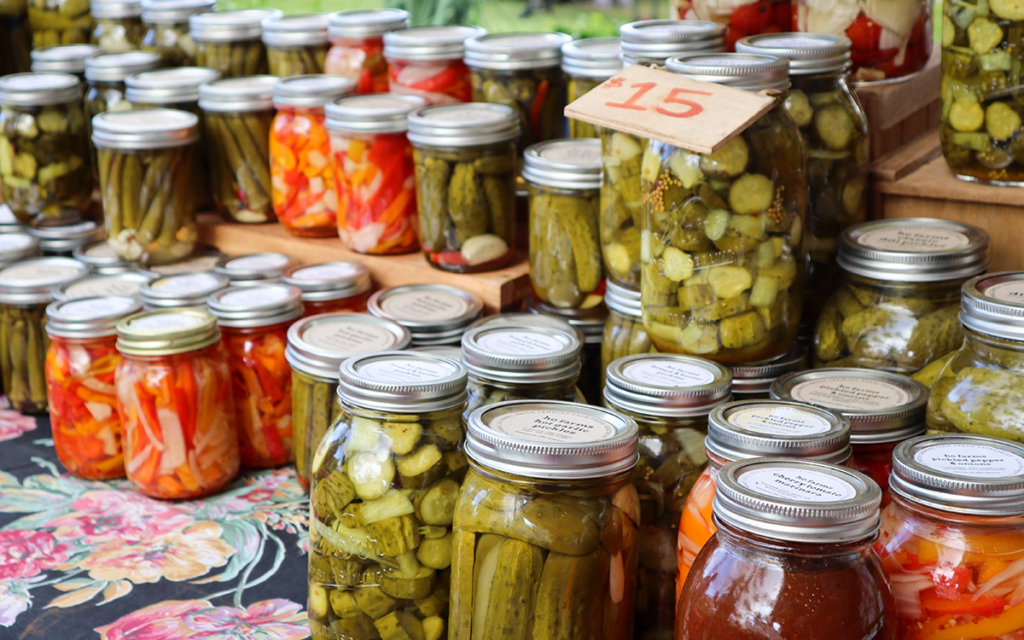The fermented food trend is catching on. While the process is observed the most in savory meals and drinks categories, with foods like kimchi, kefir, sauerkraut, kombucha, and sourdough, the trend has yet to peak.
According to Taste Tomorrow’s worldwide consumer research, 60% of customers are yearning for new food experiences, presenting numerous opportunities for forward-thinking pastry chefs who are using fermented products in their patisserie. They also have a head start, because, according to Technavio, the market for fermented foods and beverages is anticipated to expand by USD533 million through 2026. Read on and discover how fermented ingredients are used in pastry.
Fermentation and its purpose
Fermentation has been used in the kitchen for thousands of years. The procedure was used to preserve food and store it for a longer period of time. The fermentation process is carried out by natural bacteria. They feed on the sugars and carbohydrates in food, causing the meal to become acidic, therefore limiting the growth of ‘bad’ bacteria that ruin food. This also changes the flavor and texture. Existing flavors are enhanced and deepened, but new flavors emerge as well.

Fermentation has been used to preserve foods for thousands of years. (Photo: Little Plant)
Fermented foods are popular because of their ‘funky’ and umami flavors. Consumers are currently looking for unique flavors such as tart, sour, sweet and savory, or swicy (sweet and spicy). Fermenting can impart a variety of unusual flavors to baked goods.
Another reason to choose fermented foods is the nutritional and health benefits they provide. Fermenting bacteria produce compounds that have been shown to promote gut health and digestion. Both of which are now popular health food trends.
Dairy, dough, fruits and grains
The fermentation technique can be used in a variety of patisserie ingredients, including dairy products, cereals, dough, and even fruits. In fact, anyone can make their own crème fraîche or ferment entire barley, wheat, or spelt.

The fermentation technique can be used in a variety of patisserie ingredients. (Photo: Racool Studio)
For convenience, there are several ready-to-use fermented items available for purchase. These can be used in cakes, cookies, and pastries. Miso, prepared from fermented soybeans, can be used to make umami-flavored caramel sauce. Kefir, which is manufactured from milk, can be used as a base for cake fillings. And kombucha, a fermented tea, is a great addition that gives pastry fillings a unique flavor. It can also be mixed into the dough.

Kombucha (fermented tea) used in pastry fillings creates a unique flavor. (Photo: Beverage Daily)
Using fermented ingredients in patisserie not only offers the opportunity to explore new flavors, they also provide a solution against food waste. Leftover produce can be fermented to increase its shelf life and even leftover bread, or baked goods can be used to create homemade miso paste.
4 inspiring patisserie examples that apply fermentation
- Camiel Jiskoot, the founder of Chocolatier Raaf in Amsterdam experiments with fermented ingredients. One example is the BaBa-Claude, made with fermented reine claude plums. The lacto-fermented plums have a complex tart and umami taste, which works wonderfully in sweet pastry.
- Chef and owner Jay of Stay Glazed Donuts in the U.S. enjoys experimenting with peculiar flavors. This includes experimenting with fermented products like miso that tastes like salted caramel. It’s not surprising then that he’s come up with his very own Chery Miso White Chocolate Donut!
- The Australian pastry chefs at Darvella Patisserie prefer an easier, accessible application of fermentation: beer. The stout provides an interesting contrast in their Raspberry Cake with Milk Chocolate Ganache, but because everybody knows beer, the pastry appeals to a wide audience.
Bakers today face growing consumer demands for products that are natural, healthful, convenient and have taste sensations. Meeting these high expectations requires innovative solutions and ingredients, and in some categories, fermentation works well in its favor, from the unique taste it provides, to the improved nutritional profile that consumers are seeking.








